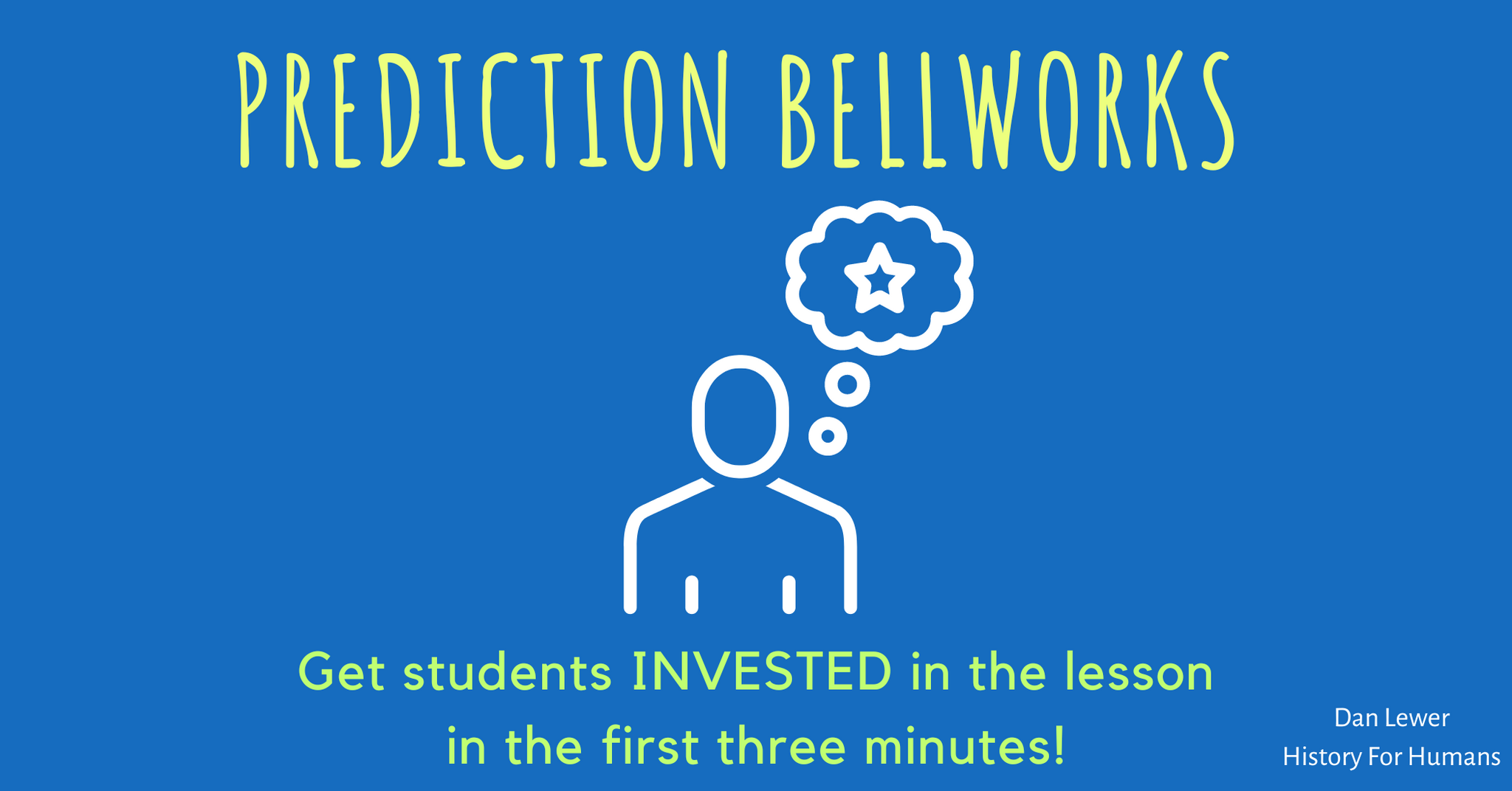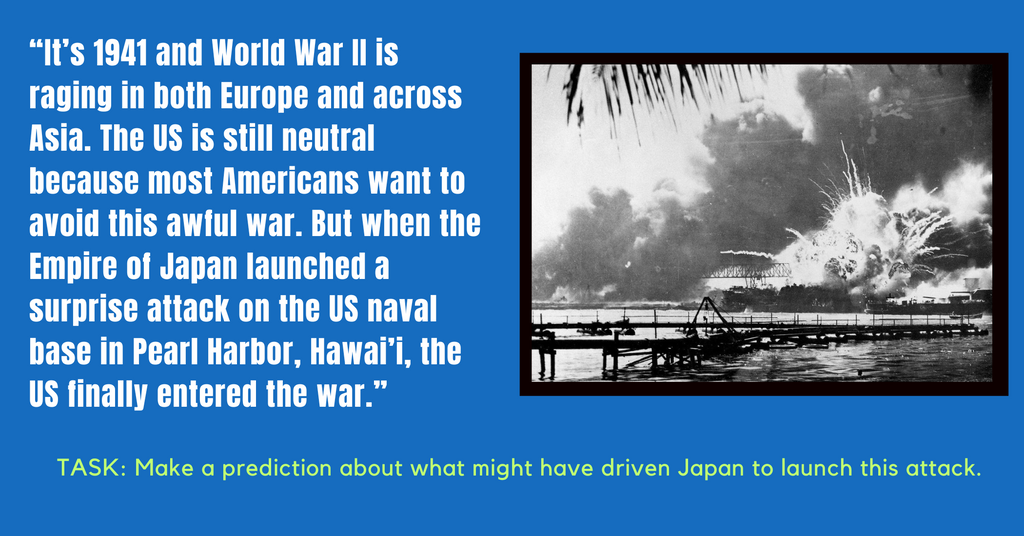A Strategy to Make Learning Targets Actually Help Students Learn

The best way to start class everyday!
My goal is always to have students curious about what they’re going to learn before the bell rings. Within the next three minutes, I aim to have them pulled into the lesson, with skin in the game!
And thats why I created Prediction Bellworks.
I developed this strategy to improve on our school’s requirement to have ‘learning goals’ on the board each day. Obviously, just putting the learning goal on the board doesn’t do anything to improve learning outcomes, unless students are tasked with actually thinking about it in some way. They actually need to put their “brains on the outcome” if learning goals are going to work.
What I started to do was turn the learning goal into a very brief scenario and then task students to make a prediction about it.
When students do this they are actually getting “skin the game”, or to use a poker metaphor, putting chips on the table, for the lesson.
They are now INVESTED in learning outcome.

Here’s how it works.
Imagine the learning goal was ‘the factors that drove America into World War II’ and your lesson is focused on the Pearl Harbor attack. The first thing I would do is create a 2-3 sentence scenario that sets up the whole lesson.
“It’s 1941 and World War II is raging in both Europe and across Asia. The US is still neutral because most Americans want to avoid this awful war. But when the Empire of Japan launched a surprise attack on the US naval base in Pearl Harbor, Hawai’i, the US finally entered the war.”
This is just short enough that even reluctant readers will engage while giving enough information to pull students into the drama and tension of the history.
Once you have the scenario, you want to challenge students to predict something about that scenario that leads to them to consider what the learning goal might be. For this one it would, “Make a prediction about what might have driven Japan to launch this attack?”
Notice that all students can predict this whether or not they were absent last class or if they struggle to recall information from previous lessons. This way, it ensures all students start off with a win and at the same time gets them to put chips on the table!

They’re now invested! This gives them a reason to pay attention for the rest of the lesson. 🤓
Done routinely this increases students’ confidence, academic achievement, and interest in history!
And in my course, Make History Engaging, Exciting, and Empowering I share much more about this strategy and other great bellwork tasks that get students excited and interested within the first three minutes of class and a whole framework for making history come alive!
Keep teaching & learning,
Dan Lewer
History For Humans




Hi – are any of your resources appropriate for 5th grade level?
Leave a comment